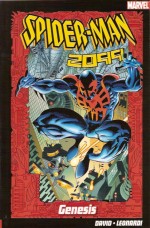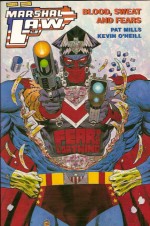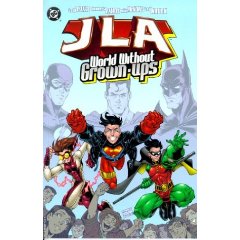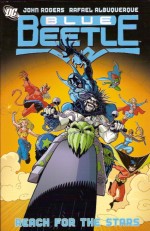
By Peter David, Rick Leonardi, Al Williamson and various (Marvel/Panini Publishing UK)
ISBN: 978-1-84653-428-7
At a time when Marvel’s product quality was at an all time low, and following a purported last minute dispute between the company and prodigal son John Byrne (who had re-invented himself by re-inventing Superman) the House of Ideas launched a whole new continuity strand with all new heroes (and franchise extensions) set more than a century into the future.
The world was corporate and dystopian, the scenarios were fantastical and the initial character-pool was predictable if not actually uninspired. A lot of the early material was by any critical yardstick sub-par. But then again there was also Spider-Man 2099.
Some analogue of the wall-crawler is always going to happen in any Marvel imprint (anybody remember Peter Porker, Spider-Ham?), and in those insane days of speculator-led markets (where greedy kids and adults dreamed of cornering the market in “Hot Issues” and becoming instant squillionaires) the early episodes were always going to be big sellers. What nobody expected was just how good those stories were to actually read…
Now the first ten issues are available in a fantastic and entertaining full colour collection.
In 2099 world governments are openly in the capacious pockets of huge multi-national corporations that permeate every aspect of society. All superheroes have been gone for decades although their legends still comfort the underclass living at the fringes – and below the feet – of the favoured ones who can survive in a society based on unchecked, rampant free-marker capitalism.
Miguel O’Hara is a brilliant young geneticist fast-tracked and swiftly rising through the ranks of Alchemax. He enjoys the privileges that his work in creating super-soldiers for the company. He loves solving problems. And now despite the interference of the salary-men and corporate drudges he’s forced to work with he’s on the verge of a major breakthrough: a technique to alter genetic make-up and even instantly combine it with DNA from other organisms…
But after a demonstration goes grotesquely awry the arrogant scientist makes a big mistake when he tells his boss that he’s going to quit. Unwilling to lose such a valuable asset CEO Tyler Stone poisons O’Hara with the most addictive drug in existence – one only available from Alchemax – to keep him loyal.
Desperate, furious and still convinced he knows best the young scientist tries to use his genetic modifier to reset his physiology and purge the addiction from his cells. However one of the lab assistants he used to bully sees a chance for some payback and sabotages the attempt, adding spider DNA to the matrix…
Fast-paced and riotously tongue-in-cheek scripts from Peter David kept the series readable but the biggest asset to Spider-Man 2099 and the greatest factor in its initial success was undoubtedly the fluid design mastery and captivating rollercoaster pencilling of Rick Leonardi wedded to the legendary Al Williamson’s fine ink lines. The art just jumps off the pages at you.
After the eponymous origin issue, #2’s ‘Nothing Ventured…’, which introduced cyborg bounty hunter Venture, and the concluding chapter ‘Nothing Gained’, which saw him soundly defeat the company hired gun, the early editorial policy downplaying “super-villains” resulted in yet another hi-tech Corporate raider in ‘The Specialist’ and ‘Blood Oath’ (issues #4 and 5) going to any length to uncover the secrets of the first costumed adventurer since the mythic “Age of Heroes” ended.
In issue #6 the hero’s Pyrrhic victory leaves him wounded in the dank shanty-zone far beneath the giant skyscrapers of the productive citizens. Spider-Man has to survive ‘Downtown’, encountering an unsuspected underclass of discarded humanity, but soon falls foul of its top predator (and first super-villain) Vulture 2099 in #7’s ‘Wing and a Prayer’ and the concluding ‘Flight of Fancy’. Kelley Jones and Mark McKenna substituted for Leonardi and Williamson in #9’s ‘Home Again, Home Again’ as the reluctant hero finds himself the latest Idée Fixe of celebrity imitators – or are they John the Baptists for a brand new religion?
All through the stories a strong family cast including younger brother Gabe, girl friend Dana, annoying mother and plain-crazy personal computer Lyla have added drama and scintillating laughs in complex and enthralling sub-plots, but in the last tale of this collection ‘Mother’s Day’ they all take centre-stage as we get a peak into the childhood that made Miguel O’Hara the man he is. His reaffirmation of purpose at the end of the book closes this superb lost gem on a merry high and promises great things to come.
It’s not often that Marvel’s output reached this kind of quality after the mid-1980s, especially with a character and setting that didn’t demand prior knowledge of an entire continuity. For sheer enthusiastic enjoyment and old-fashioned Marvel Magic you simply need to step into this particular future…
© 1992, 1993, 2009 Marvel Entertainment Inc. and its subsidiaries. All Rights Reserved.










